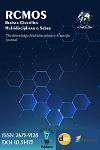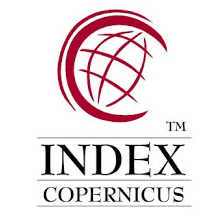Gestão Estratégica de Capital Humano em Ambientes de Alta Complexidade: Uma Abordagem Baseada em Sistemas de Decisão e Análise de Eficiência Operacional
Strategic Human Capital Management in High-Complexity Environments: A Decision Systems and Operational Efficiency Analysis-Based Approach
DOI:
https://doi.org/10.51473/rcmos.v1i1.2025.1461Palavras-chave:
Gestão estratégica, capital humano, sistemas de decisão, eficiência operacional, organizações complexas, planejamento resiliente.Resumo
Este artigo aborda a gestão estratégica de capital humano em ambientes de alta complexidade, com ênfase em organizações militares e agências de defesa. A análise combina fundamentos teóricos e práticos das áreas de Administração Pública, Planejamento Estratégico de Recursos Humanos e Manpower Systems Analysis, visando compreender o impacto das decisões estratégicas sobre a prontidão e eficiência organizacional. Utiliza-se uma abordagem baseada em sistemas de decisão, modelagem matemática e simulação de cenários para otimizar a distribuição de efetivos, alocação de competências e resposta a crises institucionais. O estudo integra conceitos de sistemas sociotécnicos, teorias motivacionais em contextos hierárquicos e planejamento estratégico resiliente, propondo um framework que potencializa a eficácia operacional e a sustentabilidade institucional. A análise destaca a importância da adaptação contínua e da governança de pessoas para manter a competitividade e a segurança em ambientes dinâmicos e desafiadores.
Downloads
Referências
BAZARAA, M. S.; SHEPHERD, J. J.; SHETTLESWORTH, J. C. Nonlinear Programming: Theory and Algorithms. 4. ed. Hoboken: Wiley, 2010.
BASS, B. M. Leadership and Performance Beyond Expectations. New York: Free Press, 1985.
BIRGE, J. R.; LOUVEAUX, F. Introduction to Stochastic Programming. 2. ed. New York: Springer, 2011. DOI: https://doi.org/10.1007/978-1-4614-0237-4
BOURNE, M. et al. The impact of organizational culture on operational and financial performance. International Journal of Operations & Production Management, v. 33, n. 3, p. 289–313, 2013.
BURNARD, K.; BHAMRA, R. Organizational Resilience: Development of a Conceptual Framework for Organizational Responses. International Journal of Production Research, v. 49, n. 18, p. 5581–5599, 2011. DOI: https://doi.org/10.1080/00207543.2011.563827
COMFORT, L. K. Crisis Management in Hindsight: Cognition, Communication, Coordination, and Control. Public Administration Review, v. 67, s1, p. 189–197, 2007. DOI: https://doi.org/10.1111/j.1540-6210.2007.00827.x
DAVENPORT, T. H. Analytics at Work: Smarter Decisions, Better Results. Boston: Harvard Business School Press, 2007.
DECI, E. L.; RYAN, R. M. Intrinsic Motivation and Self-Determination in Human Behavior. New York: Plenum Press, 1985. DOI: https://doi.org/10.1007/978-1-4899-2271-7
DEMING, W. E. Out of the Crisis. Cambridge: MIT Press, 1986.
FARRELL, M. J. The Measurement of Productive Efficiency. Journal of the Royal Statistical Society. Series A (General), v. 120, n. 3, p. 253–290, 1957. DOI: https://doi.org/10.2307/2343100
FISHER, R.; URY, W. Getting to Yes: Negotiating Agreement Without Giving In. New York: Penguin Books, 1981.
HOLLNAGEL, E.; WOODS, D. D.; LEVESON, N. G. Resilience Engineering: Concepts and Precepts. Aldershot: Ashgate, 2006.
HAMMER, M.; CHAMPY, J. Reengineering the Corporation: A Manifesto for Business Revolution. New York: Harper Business, 1993. DOI: https://doi.org/10.1016/S0007-6813(05)80064-3
KEENEY, R. L.; RAIFFA, H. Decisions with Multiple Objectives: Preferences and Value Tradeoffs. Cambridge: Cambridge University Press, 1993. DOI: https://doi.org/10.1017/CBO9781139174084
LAW, A. M. Simulation Modeling and Analysis. 5. ed. New York: McGraw-Hill, 2014.
LAW, A. M.; KELTON, W. D. Simulation Modeling and Analysis. 3. ed. New York: McGraw-Hill, 2007.
MARCH, J. G. The Logic of Appropriateness. In: MARCH, J. G.; OLSEN, J. P. (Ed.). Rediscovering Institutions: The Organizational Basis of Politics. New York: Free Press, 1989. p. 21–40.
MARCH, J. G.; OLSEN, J. P. A Behavioral Theory of the Firm. Englewood Cliffs: Prentice-Hall, 1976.
MARCH, J. G. A Primer on Decision Making: How Decisions Happen. New York: Free Press, 1994.
MASLOW, A. H. A Theory of Human Motivation. Psychological Review, v. 50, n. 4, p. 370–396, 1943. DOI: https://doi.org/10.1037/h0054346
MITCHELL, M. An Introduction to Genetic Algorithms. Cambridge: MIT Press, 1998.
NONAKA, I.; TAKEUCHI, H. The Knowledge-Creating Company: How Japanese Companies Create the Dynamics of Innovation. New York: Oxford University Press, 1997. DOI: https://doi.org/10.1016/0024-6301(96)81509-3
PERROW, C. Complex Organizations: A Critical Essay. 3. ed. New York: McGraw-Hill, 1984.
ROBERTSON, Q. M. Diversity and Inclusion in the Workplace: A Review and Synthesis of the Literature. Journal of Management, v. 32, n. 6, p. 737–764, 2006.
RUSSELL, S.; NORVIG, P. Artificial Intelligence: A Modern Approach. 3. ed. Upper Saddle River: Prentice Hall, 2016.
SCHEIN, E. H. Organizational Culture and Leadership. 4. ed. San Francisco: Jossey-Bass, 2010.
SHEFFI, Y. The Resilient Enterprise: Overcoming Vulnerability for Competitive Advantage. Cambridge: MIT Press, 2007.
SIMON, H. A. Administrative Behavior: A Study of Decision-Making Processes in Administrative Organizations. 2. ed. New York: Macmillan, 1960.
STEWART, T. R. Manpower Systems Analysis: A Guide to Methods and Procedures. New York: Wiley, 1987.
TEECE, D. J. Explicating Dynamic Capabilities: The Nature and Microfoundations of (Sustainable) Enterprise Performance. Strategic Management Journal, v. 28, n. 13, p. 1319–1350, 2007. DOI: https://doi.org/10.1002/smj.640
TRIST, E. L.; EMERY, F. E. The Causal Texture of Organizational Environments. Human Relations, v. 18, n. 1, p. 21–32, 1965. DOI: https://doi.org/10.1177/001872676501800103
VOGUS, T. J.; SUTCLIFFE, K. M. Organizational Resilience: Towards a Theory and Research Agenda. IEEE International Conference on Systems, Man and Cybernetics, p. 1107–1112, 2007. DOI: https://doi.org/10.1109/ICSMC.2007.4414160
WILKINSON, A.; KUPERS, R. The Essence of Resilience. Business Horizons, v. 56, n. 3, p. 339–346, 2013.
WEICK, K. E.; SUTCLIFFE, K. M. Managing the Unexpected: Assuring High Performance in an Age of Complexity. 2. ed. San Francisco: Jossey-Bass, 2001.
Downloads
Publicado
Edição
Seção
Categorias
Licença
Copyright (c) 2025 Ramez Andraus Junior (Autor)

Este trabalho está licenciado sob uma licença Creative Commons Attribution 4.0 International License.
Este trabalho está licenciado sob a Licença Creative Commons Atribuição 4.0 Internacional (CC BY 4.0). Isso significa que você tem a liberdade de:
- Compartilhar — copiar e redistribuir o material em qualquer meio ou formato.
- Adaptar — remixar, transformar e construir sobre o material para qualquer propósito, inclusive comercial.
O uso deste material está condicionado à atribuição apropriada ao(s) autor(es) original(is), fornecendo um link para a licença, e indicando se foram feitas alterações. A licença não exige permissão do autor ou da editora, desde que seguidas estas condições.
A logomarca da licença Creative Commons é exibida de maneira permanente no rodapé da revista.
Os direitos autorais do manuscrito podem ser retidos pelos autores sem restrições e solicitados a qualquer momento, mesmo após a publicação na revista.













